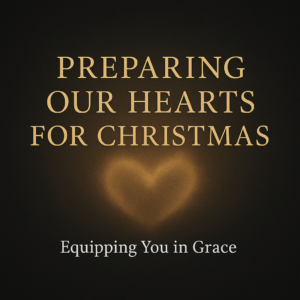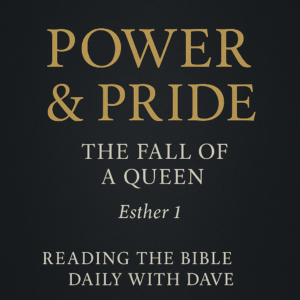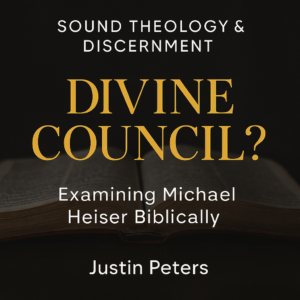⏱️ Estimated Reading Time: 15 min read
Kicking off this series on Fighting Biblical Illiteracy Through Study and Discipleship, Sarah Jenkins wrote about the fluff that permeates so much published material targeting Christian women. She urges women to abandon books, blogs, and podcasts light on Scripture and heavy on inspiration and affirmation, devoid of warnings against sin and full of false assurances like we are enough, we can do all things with Christ who strengthens us.
Cassie Langford followed with a list of questions to remind women, as we approach the Scriptures, that the Bible is a form of communication between God and His people and is meant to have an impact on our lives. Not found on Cassie’s list were two questions that sadly often appear in the materials Sarah Jenkins warned us about: What does this verse mean to you? How does this make you feel?
Honor the Author
Context honors the intent of the author. Every word of the Bible’s original manuscripts is from God. He is the Author. A careful study of His word, in context, honors Him, and diagnostic questions reveal the context of a piece of writing. We subject classic literature, secular history, and even scientific research to this type of scrutiny. Do we take Shakespeare’s ownership of his plays more seriously than God’s ownership of His holy text and the warning it holds for those who presume to parse it for their own ends?
A friend who directs student plays was telling me about a dilemma she encountered with her most recent production, an adaptation of a popular children’s story. The script she was working with excluded a scene from the book which she believed was necessary to explain a transition in events. She requested permission from the publisher to add a clarifying scene with a handful of lines, noting that the lines would be dialogue directly from the book itself. If the publisher wouldn’t allow her to alter the scene, she wouldn’t do it. She wasn’t the owner of the text, so it wasn’t her prerogative to tweak it at will, regardless of how strongly she felt or how sensible she thought her request to be.
How easy it would have been to just slip the scene in without asking permission from the publisher! I know other directors who’ve done so; after all, we’re working with students in very small troupes and performing in very small venues. Who would know or even care?
The author may not know, but the author would certainly care. The voice of the author in this sphere has authority over his creative work; otherwise, why bother calling him the author?
On a much greater level, the Author of the Bible knows and cares. How do we know this Author except by what He says? Likewise, how do we ensure we know His words rightly except by examining them, and how do we safeguard it against presumption and bias unless we test our understanding of it against proofs outside of ourselves? In short, we must insist that the text be sovereign. In Proverbs 30:5–6, we are exhorted, “Every word of God proves true. . . . Do not add to his words, lest He rebuke you and you be found a liar.”
Context is our tour guide.
If the text is sovereign, then context is our tour guide to the kingdom of God’s word. In His wisdom and creative genius, God has used a variety of tools—genre, text type, structure—to convey His redemptive and historical message. In His use of context, He manifests His sovereignty in the intricate and providential weaving and layering of events and voices into the text. Like peeling an onion, each layer reveals more to discover.
Context considers the backstory, prior discussion, or atmosphere of a biblical text or event. We know that the Old Testament covers events prior to the incarnation, while the New Testament details events following the birth of Christ. Does it really matter whether Paul sat in prison while writing his letter to the Philippians about being joyfully content in all circumstances or that the main character of a beloved Bible story was given a name that foreshadows his actions later in life as a liar and con man? Yes, it does. A text without context is a pretext, goes the old saying. Unless we understand the context of the words said and the manner and time in which they were presented, we are in danger of perverting them into a pretext and misinterpreting them to mean what we want them to mean, to soften a warning, to excuse sin, or even to blaspheme God. Paul warns Timothy that teachers are to “rightly handle the word of truth” (2 Timothy 2:15c), or else their hearers might “swerve from the truth . . . upsetting the faith of some.” (2 Timothy 2:18)
Literary Context
Context provides color and depth. It’s a soundtrack with rhythm and a lyrical theme. By reviewing the verses and chapters preceding and following our text, we discover the circumstances or the conversations that led to the events in our text. For example, Philippians 4:13 is oft-quoted by sports teams as a rallying cry to persevere to athletic victory: “I can do all things through Him who strengthens me.” But is athletic victory what Paul had in mind? A quick reading of the verses preceding the text shows that Paul is thanking the letter’s recipients for showing concern for him in his circumstances. And what were those circumstances? Paul had been imprisoned for his defense of the gospel, which we learned early in the letter (1:7), and his incarceration has allowed him to speak of Christ to the palace guards as well as other prisoners. Paul also addresses the efforts of rival teachers to “afflict me in my imprisonment” by their manner of teaching (1:16–17). Even more than the actual imprisonment, Paul was crushed by the knowledge that men who should have been co-laboring for the purpose of the gospel were instead gloating over a fellow missionary’s troubles. But even in this, Paul says, “Whether in pretense or truth, Christ is proclaimed, and in that I rejoice” (1:18).
Paul is confident that the prayers and help of the Holy Spirit will turn out for his deliverance—whatever that looks like (1:19), knowing full well that it could mean death. “For to me to live is Christ, and to die is gain” (1:21). He urges them not to be frightened by their opponents, only to strive side by side for the faith of the gospel—not push forward to gain another point for the team (1:27–28). And why? “For it has been granted to you that for the sake of Christ you should not only believe in him, but also suffer for His sake, engaged in the same conflict that you saw I had and now hear that I still have” (1:29–30).
Multiple other verses leading up to 4:13 build the case that Paul was encouraging his readers to acknowledge the lowly and afflicted circumstances in which he found himself were the natural outworking of a world opposed to the gospel of Christ. Though he was imprisoned, he would not let them speak of him being in need. Instead, he assured them he was content, a secret he had learned through valleys of want and mountain peaks of abundance, by focusing on the supernatural strength accessible through union with Christ.
A winning scoreboard pales in comparison, doesn’t it? The Author laid out the structure and order of Paul’s letter to the Philippians so that readers, then and now, would grow in courage and cling to the promise of an immutable God to provide all the strength needed in a trial. We may not be imprisoned for the sake of the gospel, but our afflictions can make us feel burdened to the point of paralysis or hopelessness. A look at all of Paul’s message—not just a single, inspiring verse—reminds us that there is joy in the confidence that His deliverance is the greatest gain.
Historic Context
Another contextual avenue to explore is the one that reveals the historical circumstances behind the text. God’s word is relevant for us today, but that doesn’t mean we regard every passage as proscriptive (a law) or prescriptive (a recommendation) for us today. Sometimes—and often in the narrative—the passage is descriptive: a “mere” telling of the story from the times in which it took place. This historical perspective can be informative. Genesis recounts several oath-swearing ceremonies involving a lesser entity, such as a son or a servant, placing his hand under the thigh of the father or master and swearing allegiance or obedience. In the Hebrew tradition, the thigh region (i.e., the loins) was considered the source of posterity. According to Got Questions?, this act recalled God’s promise of a Seed to Abraham, and thus this oath of loyalty carried more weight because it drew a parallel with God’s agreement with Abraham. (1) While this helpful historical context lends to a richer understanding of the text, we would not replicate this tradition today.
We are inclined to find what we want to see. Without context, this can result in foolish or harmful interpretations.
Next, the story of Ruth: an account of a young and beautiful widow who gives up the comfort of her homeland to travel with her also-widowed mother-in-law to the latter’s place of birth, Israel. Ruth joins other impoverished members of the Israelite community to glean the leftover grain from the fields, where she meets the man she will eventually marry. He makes his interest in her known, favors her with food gifts to her household, and spreads the word that she is not to be harassed by the other men. Upon marriage, her life is transformed, her devoted mother-in-law is relieved of her poverty, and Ruth herself becomes great-grandmother to the great King David.
Wow! Did you see how she snagged that husband? If I were a single Christian woman reading this, yearning for love and marriage God’s way, I might inspect this passage for tips for finding myself a Boaz. Sadly, that is exactly how the book of Ruth was presented at youth gatherings when I was a teen. Misinterpreting this descriptive narrative as if it were a blueprint for roping a husband would not only bring on all sorts of trouble for a young woman (wait until a man has been drinking to approach him? sleep at the feet of a prospective husband?) but also diminish the full weight and glory of the redemptive message that the book of Ruth is meant to display. The real message of Ruth? The promised kinsman-redeemer will bring into the covenant the faithful chosen from among the nations—like you and me. Why waste our time searching Ruth’s book for how-tos on flirting when its soaring message confirms my place as an heir of the promises made to Abraham’s Seed? Reading Ruth in its historical context leaves me humbled and amazed at God’s mercy and grace, not itching to share wrongly-derived husband-hunting tips with my single daughters.
We’ve looked at literary context and historic context. Another critical piece of the puzzle is hints from within a text that reference or allude to other passages in the Bible. These clues help us understand how the original audience might have made connections because of their familiarity with previous writings or events.
Biblical Context
What is all this for if we don’t end up learning more about Jesus? Can we do that from any passage of the Bible? What about the Old Testament laws of animal sacrifice? The dialogues in Job? the bloody warfare narratives from the histories of Israel?
Jesus himself says yes. After His resurrection, He appeared to two disciples on the road to Emmaus and discussed the events of the past few days with them. As they pondered what it all meant, He said to them, “O foolish ones, and slow of heart to believe all that the prophets have spoken! Was it not necessary that the Christ should suffer these things and enter into His glory?” Luke adds, “And beginning with Moses and all the Prophets, He interpreted to them in all the Scriptures the things concerning himself.” (Luke 24:25–27)
This is the trajectory of all of Scripture: from creation to new creation, Jesus is made known. Whether through the Old Testament providing the types and prophecies about the coming Messiah and the kingdom He would usher in (Genesis 3:15, Isaiah 7:14, Jeremiah 31; events in the lives of Joseph and David, the account of Israel in Exodus and exile, and the picture of the kingdom under David) or the New Testament clarifying Old Testament passages for the early church and for us, the result should be the deepening of our confidence in God’s sovereign and masterful redemptive plan and the renewing of our faith (Galatians 3:15–29, Hebrews 3:7–4:13, and 1 John 3:3).
Realizing that Jesus occupies a place and a status for every event in biblical history helps me see how He factors into the fabric of every biblical passage. The Old Testament laws regarding animal sacrifices were intended to reflect God’s holiness, sinful man’s inability to please God, and God’s plan to provide a spotless lamb to propitiate His wrath. Christ was by His Father’s side as Job declared, “I know that my Redeemer lives.” Every victory won by the Israelites in battle as they conquered the promised land was overseen by the King of Hosts, Jesus Christ, the Son of God.
This humbles me. My life doesn’t stretch back to eternity past. I cannot claim understanding or knowledge of major events of periods that took place before I was born, much less the minor comings and goings of every person who has ever lived. But Jesus can and does. Even more, He knows every person intimately, counting the hairs on our heads and determining our steps before they’re taken.
Faithful use of God’s word cuts to the heart—my heart and the hearts of others who hear the truth from my lips. Read Acts 2:14–36, where Peter’s recitation and explanation of Old Testament passages become the sword piercing the hearts of the Jewish audience, letting “all the house of Israel therefore know for certain that God has made Him both Lord and Christ, this Jesus whom you crucified” and driving them to cry out, “What shall we do?” Only the piercing word of God can do that, surgically demolishing idols and mortifying sins in our hearts everytime we open it up to read it rightly ourselves.
Women, take steps to make the careful handling of God’s word your goal. Honor the Author by not making it about you.
- Pray for the Holy Spirit to be your interpreter and guide. “Open my eyes, that I may behold wondrous things out of your law” (Psalm 119:18). Ask Him to excise bias from your heart. Plead for humility and take seriously the caution to remember what’s at stake. “If anyone teaches a different doctrine and does not agree with the sound words of our Lord Jesus Christ and the teaching that accords with godliness, he is puffed up with conceit and understands nothing” (1 Timothy 6:3–4a).
- Don’t add or take away from the word given. “You shall not add to the word that I command you, nor take from it, that you may keep the commandments of the LORD your God that I command you” (Deuteronomy 4:2; see also Revelation 22:18–19).
- Beware of extremes. Test Scripture with Scripture (1 Thessalonians 5:21); know God’s word well enough that errant teaching will stand out as contrary to the truth (Acts 17:10–12).
- Practice and persevere. The point is not to “nail it” but to advance understanding of the word for you and anyone you speak to in ministry or fellowship (2 Timothy 4:2–5).
We have a wonderful opportunity to know the exquisite richness and beauty of God’s word and to share its bounty with others. To approach it without acknowledging Him reduces it to meaningless history or storytelling. To read and study it without honoring the Author’s intent risks burdening yourself and others with the shackles of legalism or moralism. It becomes irrelevant as soon as we dismiss the context God has determined for each passage and each word. We attempt to usurp His authorship when we insert ourselves into the text as the hero, stealing glory from God, who alone deserves praise. (2)
Recommended tools for learning more about studying God’s word:
- The Charles Simeon Trust — workshops and online classes
- Teaching Women to Teach, Reformed Theological Seminary – Orlando classes for women, currently being offered online due to Covid
- Biblical Theology Workshops for Women, offered by Nancy Guthrie
- Women of the Word: How To Study the Bible with Both Our Hearts and Our Minds, by Jen Wilkin
- Bible Study: Following the Ways of the Word, by Kathleen Nielsen
- Commentary on the New Testament Use of the Old Testament, by G.K. Beale and D.A. Carson
- The Treasury of Scripture Knowledge, an online resource
- BibleStudyTools.org
- Knowable Word
Notes:
- “Why did oaths involve putting a hand under someone’s thigh?”, Got Questions Ministries, https://www.gotquestions.org/hand-under-thigh.html, accessed February 10, 2021.
- The author wishes to express gratitude to The Charles Simeon Trust for providing solid instruction in biblical hermeneutics via workshop sessions and private correspondence.




